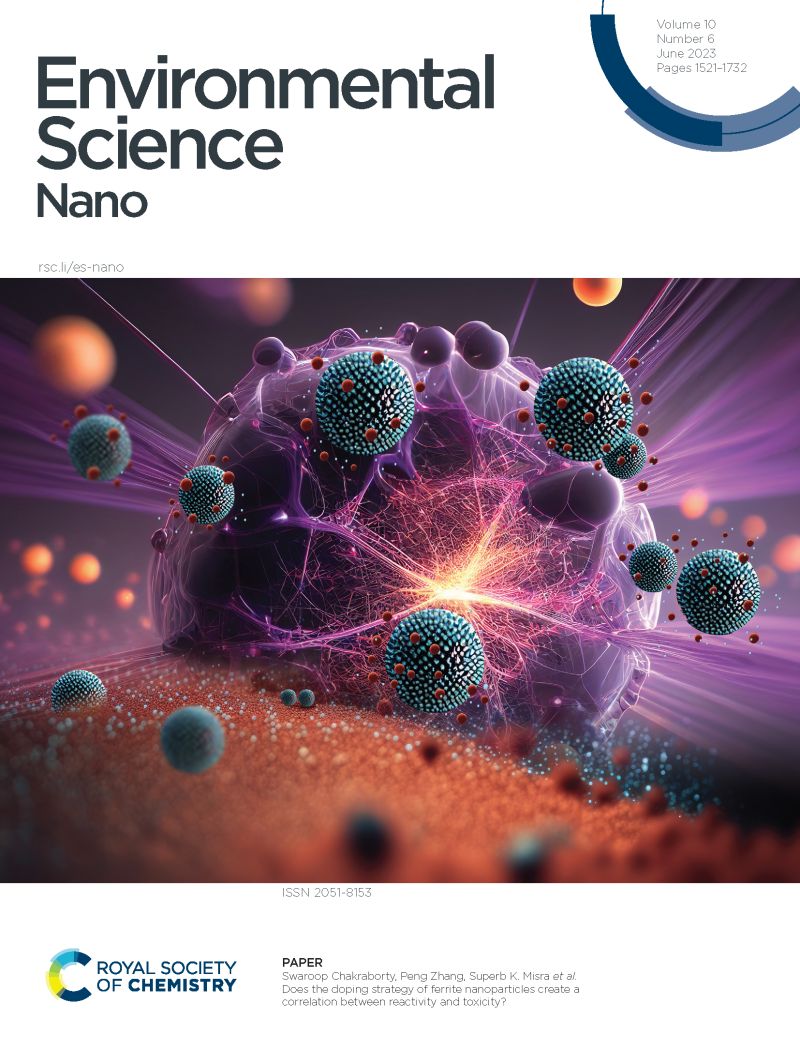Characterizing nanoplastic suspensions of increasing complexity: Inter-laboratory comparison of size measurements using dynamic light scattering
IF 5.1
2区 环境科学与生态学
Q1 CHEMISTRY, MULTIDISCIPLINARY
引用次数: 0
Abstract
Understanding the potential human health risks associated with micro- and nanoplastic exposure is currently a priority research area. Nanoplastic toxicity studies are complicated by the lack of available, well-characterized test and reference materials. Further, many nanoplastic test materials are inherently more polydisperse and heterogenous in shape compared to polystyrene beads, making accurate and representative size distribution measurements particularly challenging. The aim of this study was to conduct an inter-laboratory comparison of dynamic light scattering measurements, the most commonly used particle sizing method for nanomaterials. Using a published standard operating procedure, size measurements in water and a standardized cell culture medium (CCM) were generated for spherical, carboxy-functionalized polystyrene nanoparticles (PS-COOH; 50 nm; benchmark material), and for in-house produced spherical poly(ethylene terephthalate) (nanoPET) and irregular-shaped polypropylene (nanoPP) test materials. The weighted mean of hydrodynamic diameters of PS-COOH dispersed in water (55 ± 5 nm) showed moderate variation between labs (coefficient of variation, CV=8.2%) and were similar to literature reports. Measurements of nanoPET (82 ± 6 nm) and nanoPP (182 ± 12 nm) in water exhibited similar CV values (nanoPET: 7.3% and nanoPP; 6.8%). Dispersion of PS-COOH and nanoPET in CCM increased the CV to 15.1 and 17.9%, respectively, which is lower than literature reports (CV=30%). We conclude with a series of practical recommendations for robust size measurements of nanoplastics in both water and complex media highlighting that strict adherence to a standard operating procedure is required to prevent particle agglomeration in CCM.表征日益复杂的纳米塑料悬浮液:使用动态光散射进行尺寸测量的实验室间比较
了解与微和纳米塑料接触有关的潜在人类健康风险是目前的一个优先研究领域。纳米塑性毒性研究由于缺乏可用的、表征良好的测试和参考材料而变得复杂。此外,与聚苯乙烯珠相比,许多纳米塑料测试材料在形状上更加分散和异质,这使得准确和具有代表性的尺寸分布测量尤其具有挑战性。本研究的目的是对动态光散射测量进行实验室间比较,动态光散射测量是纳米材料最常用的粒度测量方法。使用已发布的标准操作程序,在水中和标准化细胞培养基(CCM)中对球形,羧基功能化聚苯乙烯纳米颗粒(PS-COOH; 50 nm;基准材料),以及内部生产的球形聚对苯二甲酸乙酯(nanoPET)和不规则形状聚丙烯(nanoPP)测试材料进行尺寸测量。分散在水中的PS-COOH水动力直径的加权平均值(55±5 nm)在实验室之间存在中等差异(变异系数,CV=8.2%),与文献报道相似。纳米et(82±6 nm)和纳米p(182±12 nm)在水中的CV值相似(纳米et: 7.3%,纳米p; 6.8%)。PS-COOH和nanoPET在CCM中的分散使CV分别增加到15.1和17.9%,低于文献报道(CV=30%)。最后,我们提出了一系列在水和复杂介质中对纳米塑料进行可靠尺寸测量的实用建议,强调严格遵守标准操作程序是防止CCM中颗粒团聚的必要条件。
本文章由计算机程序翻译,如有差异,请以英文原文为准。
求助全文
约1分钟内获得全文
求助全文
来源期刊

Environmental Science: Nano
CHEMISTRY, MULTIDISCIPLINARY-ENVIRONMENTAL SCIENCES
CiteScore
12.20
自引率
5.50%
发文量
290
审稿时长
2.1 months
期刊介绍:
Environmental Science: Nano serves as a comprehensive and high-impact peer-reviewed source of information on the design and demonstration of engineered nanomaterials for environment-based applications. It also covers the interactions between engineered, natural, and incidental nanomaterials with biological and environmental systems. This scope includes, but is not limited to, the following topic areas:
Novel nanomaterial-based applications for water, air, soil, food, and energy sustainability
Nanomaterial interactions with biological systems and nanotoxicology
Environmental fate, reactivity, and transformations of nanoscale materials
Nanoscale processes in the environment
Sustainable nanotechnology including rational nanomaterial design, life cycle assessment, risk/benefit analysis
 求助内容:
求助内容: 应助结果提醒方式:
应助结果提醒方式:


